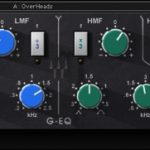
So, You Really Won’t Hire a Pro System Designer

I see a common question come up in groups and forums that is sort of along these lines:
Will X speaker(s) work for my room?
First, let me state an answer that the vast majority of these questions get: If you are not an experienced system designer–and odds are you aren’t if you’re asking that question to begin with–do yourself a big favor and hire a professional. I have 3-4 design/build firms here in the US I regularly refer clients to for design work, and I’m also always happy to help evaluate systems and system designs.
Now, I know some of you are in parts of the world where hiring an experienced system designer is not an option, and that’s part of why I’m writing this. However, many of the people I see asking questions like this end up asking more inexperienced people for help thinking they’ll save money only to end up with less than ideal results spending far more in the long run. Those of use who have been doing this long enough have seen far too many horror stories of people who tried to take a completely DIY approach or band-aid things because they thought that’s all they could afford.
So, once again, I implore you to at least talk to a professional before you try and do something on your own. A brief advisory phone call could be one of the best investments you make, and you can always contact me about this through my website. I don’t sell gear so I have no skin in the game in trying to get you to buy anything.
That said, in addition to those without the ability to find a system designer in their country, I know some folks simply will for whatever reason try and figure this all out on their own so I have some tips and things to think about today for the DIY’ers. This won’t quite be system design 101, but hopefully it will keep you from shooting yourself in the foot too many times.
So first thing’s first: A mistake I see would-be and reluctant system designers make is to only think or at least spend too much time thinking in terms of output power for their loudspeakers. Power matters, but a bigger issue to consider that gets lost on the uninitiated is coverage.
So what is coverage?
The main goal with system design is to cover your listening area with sound so we have the same relative sonic experience in as many seats as possible. This starts with speakers pointed at the people or at least where the people will be one day, and you would be amazed how often this gets done incorrectly. If you want examples, a good place to start are local clubs.
A reputable loudspeaker will have a documented coverage spec that explains where sound will go. I’m simplifying here, but intelligibility basically falls off when you move outside the loudspeaker’s coverage. Inside coverage you hear everything and outside coverage you don’t. Moving in and out of coverage isn’t usually an on/off experience where you stop hearing everything, but you do lose the stuff that’s important for clarity.
Now, based on where you are considering positioning your speakers, there will be an angle of coverage your speakers achieve both in terms of vertical and horizontal coverage. The horizontal coverage will take care of the width of the listening area while the vertical coverage will be important in determining how far you can throw sound. I should mention that not all manufacturers get their spec’s right, but they should give you information to get started and be in the ballpark.
Depending on where you position your speaker(s) there will also be a horizontal and vertical coverage angle you need to hit in order to put adequate sound throughout your listening area. Unfortunately, your coverage needs and your loudspeaker’s coverage abilities will rarely be a perfect fit, and the biggest misses I see in system design relate to this. The first place things go wrong is having loudspeakers aimed improperly or providing wider coverage than needed.
If your speakers are throwing sound at places where there are no people, they may exacerbate acoustic issues in the room. A big place this happens is with vertical arrays. Vertical or line arrays tend to be very popular these days, but their horizontal coverage angles also tend to be pretty wide in the 90-110˚ range. By comparison, a traditional trap box is usually in the 45-60˚ range. The wide angle of line arrays is helpful for covering large areas, but in a lot of rooms they often put a lot of energy into the walls. And if those walls weren’t acoustically constructed or treated there can be problems.
This also reminds me of something else I see get messed up a LOT. You usually can’t just turn speakers on their side because they fit or look better. The horns that dictate the coverage of your speaker are rarely symmetrical between the horizontal and vertical so if you turn your speaker on the side, you swap your coverage. Some speakers have rotatable horns so you can get away with this, but most don’t so make sure your speakers are in the right orientation. I’ve seen this messed up in kids’ rooms for churches that spent MILLIONS of dollars on AV in their big room so make sure you orient your speakers properly.
The next coverage area where things go wrong is with inadequate coverage. No system is perfect and sometimes coverage may be compromised intentionally for acoustic and/or cost reasons, but on the DIY side this is usually attributable to a lack of understanding loudspeaker coverage fundamentals.
One of the biggest problem areas I find when visiting churches and evaluating their loudspeakers is poor coverage in the front row(s). It’s been said you should never judge a system by the front or back row, but this is problematic in churches because in many cases the front row is where church leadership sits. Since the coverage angle of a loudspeaker doesn’t open up as much when you are closer to the speaker, it is easy to end up with coverage issues in the front.
The back row can be problematic as well because if leadership isn’t in the front row, I often find them standing along the back wall. The back is also where the mix position often ends up especially in smaller churches giving the FOH engineer a compromised listening position. So let’s talk about loudspeaker throw.
It’s been my experience when dealing with a properly flown traditional trap box, horizontal array, or speaker cluster, you aren’t going to get much more than 50-75′ of good coverage. Ground stacked loudspeakers and/or speakers on sticks will give you even less.
This comes down to a couple of things. First we have our speaker’s vertical coverage which we use to get proper coverage from the front to the back. We want all our listeners within that vertical coverage zone, and this is usually easier to achieve than horizontal coverage especially as we raise our speakers and angle them down a bit.
The other issue, though, is a loss of energy over distance. If we have too large of a front to back change–typically more than 6 dB–the front of the room will have a much different experience than the back. This change in experience can be the equivalent to moving outside of coverage.
A lot of people’s first thought to solve this is to add more power up front, but that doesn’t fix it. A louder speaker might give you better results in the back of the room, but it does this at the cost of making things even louder up front because more power increases power EVERYWHERE. The correct fix is to get the position and angle of your speakers right to begin with. This is why a lot of us like flying speakers, by the way. When we fly them we can typically get better coverage to more listeners.
So how much power do you need?
That really depends on how loud you want things. My general rule is I want 20dB or more SPL peak power than my intended average. For example, if my average is going to be 93 dBA, I will want a loudspeaker capable of at least 113 dBA peaks AT my listener. Knowing that and the distance the average listener is from the loudspeaker, I can dig up a calculator in a smartphone app or online that will tell me what the output needs to be based on the available spec’s for the speaker. There are a lot of great calculators at sengpielaudio.com, by the way. None of this matters, of course, if the front to back coverage isn’t optimized, though.
I guess the bottom line I’m trying to make is if you are trying to put in a system yourself, make sure you look at the coverage. You’re going to have to measure your room if you don’t have the information, and you’re going to need to break out a protractor and figure out what kind of coverage you need. THEN you can start looking for speakers that will work in your room where you can put them.
Of course, these things are only the beginning of what to think about because the minute you put more than one speaker in a room, there will also be interaction between them to be considered. So, again, if you are looking for someone to run things past, you can always contact me through my website.

 Previous Post
Previous Post Next Post
Next Post



Wow- I think you covered the majors in a most succinct and understandable way. Would love a similar length post on the majors of tuning! And what do you think of Waves TRACT?
System tuning is a tough one because on the one hand it can actually be fairly simple, but it can also get pretty complex. I will get something together on TRACT, though, once I’m done testing it and have some thoughts. It might not show up on here, though, but I’ll definitely post it in the Waves Worship Production FB group.
I think the biggest overlooked area of not getting a true designer or consultant is a lack of documentation that supports the design. And they don’t use a repeatable process for performance verification and system tuning… it’s all “best effort.”
Yep, that’s another issue, although, I’m not sure I would say it’s overlooked because DIY’ers just don’t know to do it. So they get to learn it all the hard way and so does their leadership.